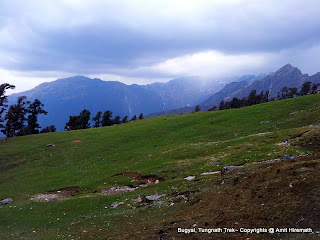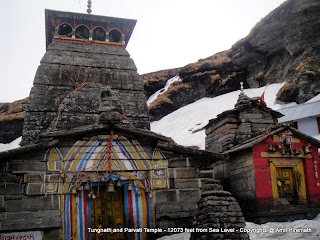Often, Jammu is discussed in
context with pilgrimage to Vaishno Devi or a gateway to Kashmir. People don’t
‘travel’ to Jammu but it is like a pit stop. Thus, little is known about the
main attractions of this city, forget about the food. Since I have the
privilege of staying in Jammu for longer periods as it is my in law’s place, I
can vouch for the extra-ordinary street food this Dogra stronghold has to
offer.
Jammu is generally famous for its
Rajma Chawal (Kidney beans curry with piping hot steamed rice). The kidney
beans cultivated in the Bhaderwah region of Kashmir are supposed to be the best
quality in the world. It is a no brainer that Rajma is an integral part of both
Dogra and Kashmiri cuisine. There are various places across Jammu serving Rajma
Chawal, but in my view, it is best served at home.
The original Dogra cuisine is
actually very simple and is normally constituted of wheat, maize, pearl millet,
rice and cereals and bears striking similarity with the Himachali cuisine
(owing to sizeable Dogra population in HP). However, I could see a transformation
in Jammu where the neighbouring Punjab has a lot of say, especially in the
breakfast spread. The deep fried aloo tikkis, chole bhature are the preferred
dishes now-a-days. Chowmein as the Chinese noodles are generally referred
across North India is very much in vogue. Mahajan Namkeen and Sweets on Canal
Road appears the first choice for people of Jammu
The street food of Jammu is
probably the tastiest offering by this city for the gastronomical devouts.
There is a sizeable spread to taste and should not cause any disappointment to
the rookies also. ‘Kulcha’ is a very famous snack in Jammu which comes in
various forms depending on the stuffing. So it could be aloo kulcha (potato),
chole kulcha (chickpea), nutri kulcha (Soya Chunks). Kulcha (as in Jammu and
other parts except Amritsar) is a round baker’s spread split open and warmed on
flat pan, stuffed with chopped onions, tomatoes, green chutney (coriander and
mint) along with the specific stuffing.
 |
| Kalari Kulcha in Making |
The ‘King of The Jammu Street
Food’ is the famous ‘Kalari Kulcha’. The stuffing is made from the awesome
Kalari Cheese (known as Maish Krej in Kashmir) is an exclusive cheese available
only in J&K and to quote once again ‘it beats mozzarella by miles’ and is a
‘die if you miss’ kind of dish. My favourite place is the guy who dishes out
these Kulchas in Ladies Market in front of Taj Boutique in Kacchi Chavani area.
There is another advantage to eat kulcha here that you get to see so many
pretty faces. J
Kacchi Chavani area of Jammu is
the den of street food. You get to taste everything from kulchas to tikkis to
bhaturas to golgappas. You may also come across a unique item known as ‘Lachcha
Kulfi’ here. The famous Malai Kulfi is served with noodles laced in rose syrup.
It is a unique stuff but not out of the world, in my view. You can always
resort to the safest option of lassi if you are not in a mood to experiment too
much with your food.
 |
| Lachcha Kulfi |
Along with the generic spread of
snacks, Jammu offers something very unique. One of them is ‘Kachalu’. Kachalu
are colocacia (arbi,arvi) corms sliced and diced and marinated with tangy
spices. The texture of the bite is not smooth but slightly grainy and is
probably similar to the ‘Garadu’ which is available in Indore at Sarafa Bazaar
during winters. Girdhari Kachaluwala in
Kachchi Chaavani is supposed to dish wonderful kachalus and fruit chaats.
‘Masala Mooli’ is a delectable dish made of baby white radishes sprinkled with
right amount of spices. Wonderful example of zingy and tangy combination!
Arrival of Kashmiri Pandits in
early 90’s have also added another dimension to Jammu’s food culture. Though
generally restricted to Kashmiri people, the cuisine can be easily accessed by
being guest in a kashmiri home or attending kashmiri wedding. Dum aloo, red and
yellow paneer, tangy brinjals (chyok wangun), haakh (collard greens) and monje
haakh (kohl rabi) are the recipes one must try. Kashmiris love to have baker’s
bread for their breakfast and hence, every Kashmiri colony has one traditional
bakery known as ‘Kaandar’. The traditional breads like gyevchot, katlam, tyel
woru, kulcha (this is different) go wonderfully well with the sweet milky tea
or the salty pink tea. And since I have mentioned about tea, the discussion
would never be complete without mentioning my most favourite tea, Kahwa, the
wonderfully aromatic clear green tea with bits of dry fruits.
 |
| Gyevchot Bread with Sweet Tea |
As with most of the hilly areas
in North India, momo is a very popular snack item here. Steamed momos are the
packets of fine flour filled with grated vegetables (or chicken) and served
with pungent chutney and steaming soup. It is a must experience on cold windy
evening in Jammu, especially in the outskirts.
Jammu has few swanky restaurants
like Falak in Raghunath Bazar area. But they actually don’t represent the food
culture of Jammu. Jammu is rather epitomized by the bustling streets and the
food available on these streets and in the homes on people in Jammu. Jammu is also known as the City of Temples and
hence, the religious factor has somehow augured well with the vegetarian
quotient here. There are pockets in Jammu for non-veg delicacies but I am not an authority on it.
But the veg spread is droolicious. Bon appétit!
Jammu is well connected by road,
railways and airways. Personal suggestion is to go by road or train, especially
the long journeys. Best time is to visit
during winters i.e. November to February where the food can be enjoyed to
fullest terms. Jammu has an array of hotels and lodging arrangement due to its
importance as pilgrimage point as well as pit stop for Kashmir. Area around
Raghunath Bazaar offers good accommodation at reasonable prices.
This blog was published as a featured story on the website of The Alternative. Following is the link to the URL : http://thealternative.in/travel/the-gastronomic-traveller-jammus-north-indian-kashmiri-and-chinese-street-food/


























